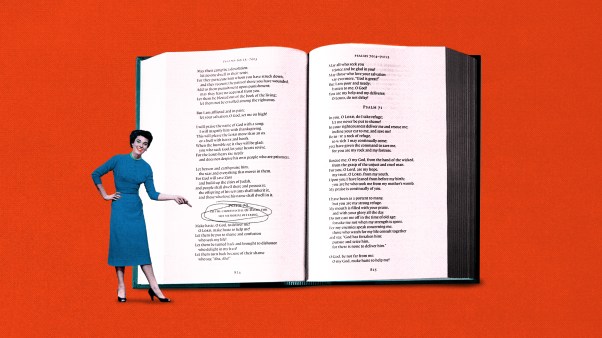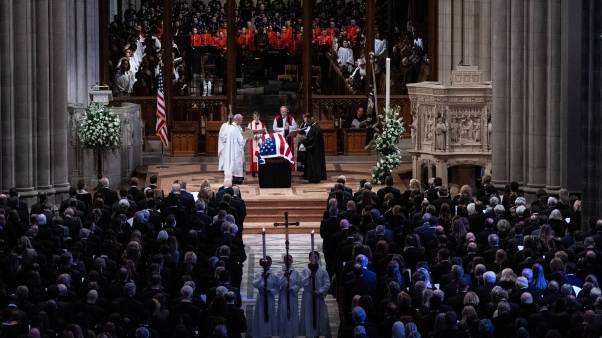Why not write something that “a lot, a lot, of people like?” Regina O’Connor asks her daughter, the writer Flannery O’Connor, in the middle of the new biopic Wildcat. The same question might be put to the film itself. It’s not a movie that a lot of people will like. But unlike the author’s mother, I mean that as a high compliment. Director and screenwriter Ethan Hawke has made a film worthy of Flannery O’Connor’s genius.
An epigraph from O’Connor’s essay “The Nature and Aim of Fiction” sums up what Wildcat sets out to do: “I’m always irritated by people who imply writing fiction is an escape from reality. It is a plunge into reality.” Fittingly, rather than depict the writer’s life from birth to death, Wildcat uses her fiction to discover what’s real, to “get down under things” to the problem of suffering, the limitations of human experience, the desire for goodness, the habits of evil, and, always present, the longing for God.
The result is a movie as scandalous as one of O’Connor’s short stories—“shocking to the system,” to borrow her words. Her devotees will applaud it; most of the audience will be left wondering what just clobbered them.
After that opening epigraph, Wildcat rolls a fake trailer for a 1950s-style horror flick inspired by O’Connor’s story “The Comforts of Home.” (A mother brings home a wayward, orphaned teen who tries to seduce her grown son. The son attempts to kill the teen, but shoots his own mother instead.) The trailer, starring Laura Linney and Maya Hawke—who also play the roles of Regina and Flannery— sets up expectations for Wildcat’s time period, for its gothic weirdness, and for its blending of fiction and biography.
Most of the movie’s action occurs in 1950, the year O’Connor returned home to Milledgeville, Georgia, and was diagnosed with lupus. Fictional stories, threaded throughout the biographical narrative, are drawn from all over her corpus—from “Good Country People” (a Bible salesman steals a crippled woman’s prosthetic leg) to “Revelation” (Mrs. Ruby Turpin is a warthog from hell capable of having her virtue burned clean).
Flannery O’Connor wanted to be a great writer and a good Catholic, and viewers witness her wrestle with disappointments as she tries to be faithful to both God and vocation. We hear voiceover petitions from her A Prayer Journal, composed while she was a student at the University of Iowa MFA program, with beautiful shots of the young woman as a pilgrim. She confesses to the priest Father Flynn (Liam Neeson) in a scene that mimics her story “The Enduring Chill.” (Asbury Fox returns home to his mother’s farm, sick and debilitated, and is catechized by the local priest.)
When O’Connor attends a graduate school party, she drops a bottle of rum before she arrives. This scene is drawn from her biography; in fact, her friend Sally Fitzgerald thought this incident was a real-life metaphor for how “Flannery seemed fated to asceticism.” Wildcat does portray O’Connor as an outcast from what her friend called “frolics”; she simply can’t compromise her zealous Christian faith. Through scenes both real and imagined, the film demonstrates the untiring dedication to truth that made O’Connor perhaps unpopular with her peers. That zeal also made her the great writer (and good Catholic) that she desired to be.
Wildcat also brings O’Connor’s writing to life, defamiliarizing even the most well-known of her stories. Take, for instance, the ahistorical treatment of “Parker’s Back” (1964). (This synopsis is a straightforward one: O. E. Parker has a tattoo of Jesus on his back.) We hear the name of the central figure, “Obadiah Elihue,” in the mouth of an editor at Rinehart Publishing. In reality, the editor had nothing to do with this story’s publication, though he did notoriously decide not to publish O’Connor’s novel Wise Blood.
Later, O’Connor reads “Parker’s Back” at Iowa in front of Robert “Cal” Lowell (Philip Ettinger). The scene is cast as a first meeting, though the two writers actually met at the artists’ retreat Yaddo in 1948, and Lowell didn’t teach at the university until 1950. But seeing his imagined response intensifies our own understanding of the story. The newly converted poet listens enthralled.
And later, Wildcat riffs on “Parker’s Back” yet again, dramatizing the story on screen. O. E. Parker (Rafael Casal) and his future wife Sarah Ruth (Maya Hawke, again) fall in love. Their marriage as portrayed here is even more believable than on O’Connor’s page—perhaps in part because of that final scene, when Sarah Ruth beats her husband’s back. Reading about Christ’s bleeding face is one thing; seeing it, droplets running over the tattoo ink, is another. Wildcat does not merely translate words into images; it glosses O’Connor’s stories for us, so that we can reimagine them anew.
Though fans are often tempted to deify O’Connor, Wildcat resists that temptation. It allows us to know the woman behind the artistry: her illness, her feelings for friends, her nuanced relationship with her mother. It’s one thing to hear about her deterioration from lupus; it’s another to see the rash on her face, to watch a young girl inject cortisone shots into her thigh with a needle the size of her hand.
Because of her sickness, O’Connor had to forego mild love interests that could have become something more. Biographers publicized her brief affair with Erik Langkjaer, a traveling textbook salesman from Denmark, who said kissing her was like “kissing a skeleton.” That unfortunate description casts O’Connor as less than flesh and blood. However, Wildcat shows a young woman enamored with her writing mentor (who seems just as drawn to her). One rightly wonders what might have happened had she been spared the ravages of lupus.
Instead, the dominant relationship in O’Connor’s life was with her mother, whom she called Regina from the time she was a child. Some have characterized Regina as overbearing and suffocating, much like the comic maternal characters in O’Connor’s short stories. Other biographers uplift her as sacrificing everything for Flannery, trying to support the daughter that she didn’t understand but to whom she was devoted until her death. The reality is likely a mix of both, which the film balances well.
In 1957, O’Connor’s short story “The Life You Save May Be Your Own” was made into a televised play starring tap-dancing sensation Gene Kelly. Everyone in Milledgeville thought that “Regina’s daughter who writes” had finally done something worthwhile (“They feel I have arrived at last,” O’Connor wrote) because her uncomfortable stories had been sanitized for public consumption. In a letter to a friend, O’Connor derides the congratulations: “The local city fathers think I am a credit now to the community. One old lady said, ‘That was a play that really made me think!’ I didn’t ask her what.”
Clearly, Flannery O’Connor did not take any pleasure in growing her audience by making her stories more palatable. (Thankfully she was not alive in the era of platform building!) She wrote not to placate lukewarm Christians, but to startle them. Like a 20th-century Kierkegaard, she knew the truth was absurd, and therefore it would have too few adherents. She had a prophetic imagination, which means that if she was true to using her talent, she’d have as many fans as Ezekiel or Jeremiah.
Wildcat is loyal to that prophetic gift. If 1950s adaptations of Flannery O’Connor’s work to the screen dishonored their maker, Wildcat accomplishes the opposite. It celebrates a writer who was once called “prematurely arrogant,” but who was, by much suffering that she did not deserve, beautifully transfigured.
Jessica Hooten Wilson is the Fletcher Jones Chair of Great Books at Pepperdine University and senior fellow at Trinity Forum. She is the author of several books, most recently Flannery O’Connor’s Why Do the Heathen Rage?: A Behind-the-Scenes Look at a Work in Progress.











